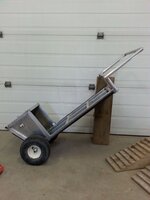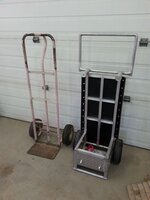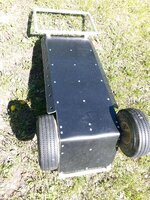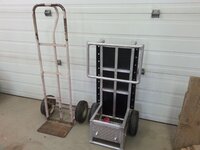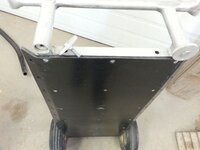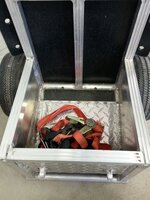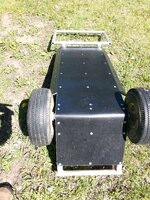Jim in Idaho
Silver Member
- Jul 21, 2012
- 3,320
- 4,698
- Detector(s) used
-
White's GM2, GM3, DFX, Coinmaster, TDI-SL, GM24K, Falcon MD20, old Garrett Masterhunter BFO
'Way Too Cool' dual 18 Watt UV light
- Primary Interest:
- Prospecting
So, when you look at the two types, you see different operating conditions. In the first, the water pressure from the inlet has to overcome both the spring pressure, and the vacuum created by the water in the standpipe. When it does, the valve opens until the pressure drops, and the spring closes the valve.
In the second type, the valve is held closed by the vacuum alone, and the inlet pressure + the spring pressure open the valve until the pressure drops enough to let the valve be closed by the vacuum alone, or the weight of the diaphragm assembly. In this unit, the spring is doing nothing more than acting as a counterbalance to the diaphragm assembly's weight. I can see this being pretty touchy to adjust. Also, for this type, the outlet valve seat has to be roughly even with the top of the valve body. If it were much below, the valve wouldn't close.
Note that in both cases there is an adjustment for the rate of input flow....I'm thinking that is critical to the overall operation.
Jim
In the second type, the valve is held closed by the vacuum alone, and the inlet pressure + the spring pressure open the valve until the pressure drops enough to let the valve be closed by the vacuum alone, or the weight of the diaphragm assembly. In this unit, the spring is doing nothing more than acting as a counterbalance to the diaphragm assembly's weight. I can see this being pretty touchy to adjust. Also, for this type, the outlet valve seat has to be roughly even with the top of the valve body. If it were much below, the valve wouldn't close.
Note that in both cases there is an adjustment for the rate of input flow....I'm thinking that is critical to the overall operation.
Jim



